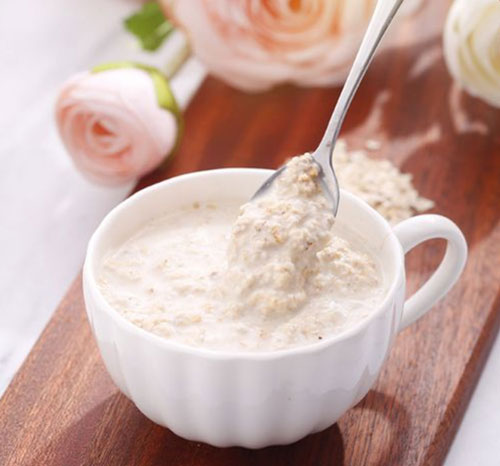Trisodium phosphate is a common food additive and detergent ingredient used to regulate pH and soften water. Sometimes, we can find trisodium phosphate in the ingredient list of some cereals, so is this cereal a substandard product?
To know if it is safe, we could just check the amount of trisodium phosphate used. Generally, the maximum use limit of trisodium phosphate in food is 5.0g/kg, below this amount, is generally considered to be harmless to humans.

I. The role of trisodium phosphate in cereal
A.Adds fluffiness:
Trisodium phosphate pastes the starch in the food, thus increasing the fluffiness of the food and making the cereal fluffier.
Puffed cereal has a crunchier texture, better chewiness, easily dissolves in milk, while absorbing flavors more because of the space, and is better suited for adding other ingredients such as fruits and nuts. Non-puffed cereal, on the other hand, has a slightly duller texture and does not easily dissolve into milk, but is chewier and has a more solid taste.
B.Prevents mold and bacterial growth:
Trisodium phosphate creates an alkaline environment in food, thus preventing mold and bacterial growth and extending the shelf life of food.

Of course not all cereals contain trisodium phosphate.
Trisodium phosphate is primarily used to add fluffiness to cereal, and not all cereals add this ingredient. For example, some brands of cereal do not have trisodium phosphate in their ingredient list, but use other ingredients to achieve a similar effect.
II. Matters to be noted when adding trisodium phosphate in food production:
A. Maximum use level
The standard stipulates that the maximum use level of trisodium phosphate in food is 5g/kg, which is to avoid health hazards caused by excessive intake of trisodium phosphate by human body. However, although 5g/kg is the maximum use level, it should be adjusted appropriately according to the characteristics and use needs of different foodstuffs in actual production to ensure the quality and safety of foodstuffs.
There are a lot of worries about the poisonous of this chemical, we believe it is not necessary. We have a seperate article of “is trisodium phosphate dangerous” discuss this, please feel free to read if you what to know more about this chemical.
B. pH requirement
The standard stipulates that the pH value of trisodium phosphate in food should not be lower than 4.5, this is to avoid the decomposition of trisodium phosphate in too acidic environment to produce harmful substances, which will affect the safety and taste of food. Therefore, it is necessary to pay attention to the acidity of the food and adjust the pH value in the production process.

C. Production process
The standard specifies the production process of trisodium phosphate, which is to ensure the hygienic conditions and quality control during the production process, and to prevent the generation of harmful substances. Manufacturers should produce according to the process requirements specified in the standard and accept the corresponding supervision and inspection.
III. Conclusion:
Trisodium phosphate helps cereals stay fluffy and prevents bacterial growth and mold, and is a necessary additive to ensure that food can be used safely. Therefore, there is no need to go into a panic when we see trisodium phosphate in food products. In the food industry, the amount of trisodium phosphate used is strictly regulated to ensure its safety. Manufacturers should strictly follow the provisions of the standard and undergo appropriate supervision and inspection. When shopping for food products on a daily basis, please choose brands from regular manufacturers to ensure that the additives in food products are within safe limits.

